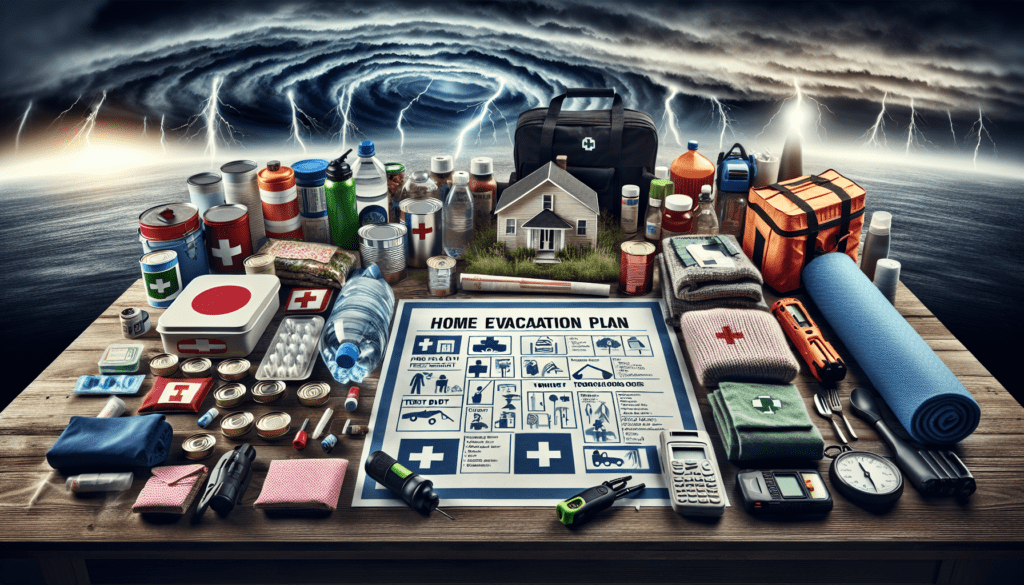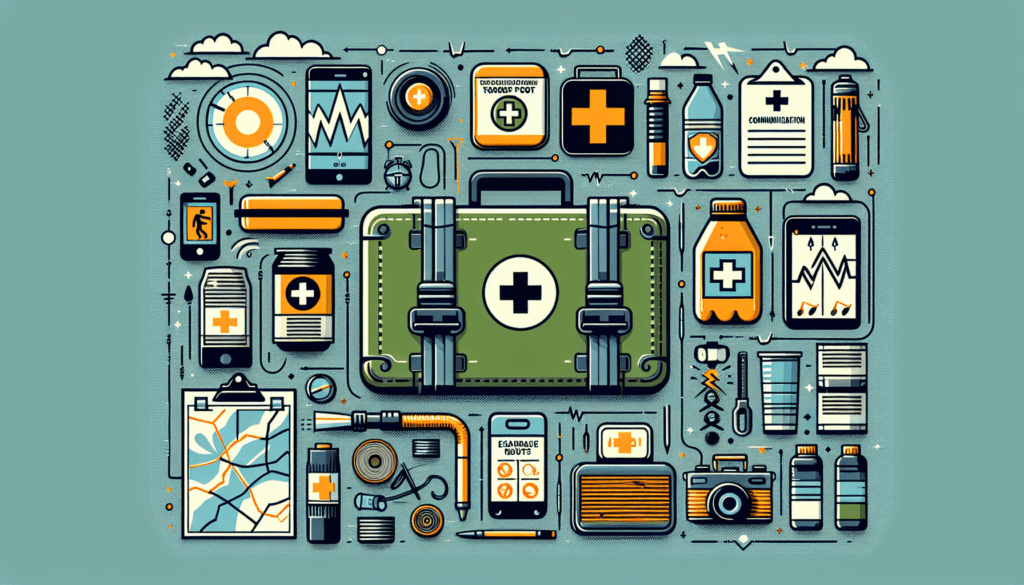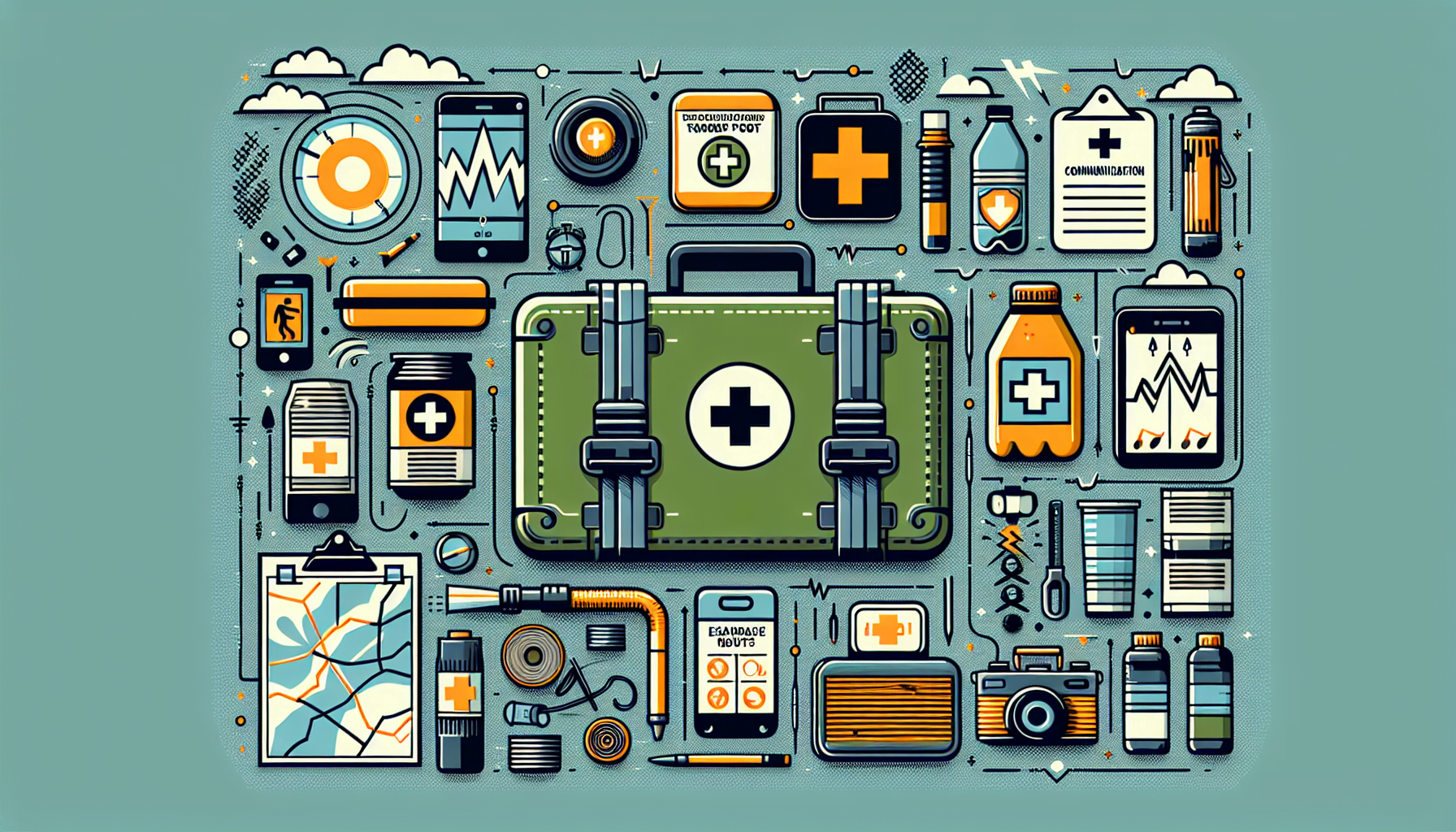Imagine you find yourself in a sudden emergency situation, and you’re left feeling scared and unprepared. It’s a frightening thought, but it’s crucial to have a plan in place for such scenarios. In this article, we will guide you step-by-step on how to create an emergency preparedness plan that will equip you with the necessary tools and knowledge to handle unexpected situations effectively. From assessing potential risks to assembling a disaster supply kit, you’ll learn all the essential elements needed to ensure you and your loved ones are well-prepared for any crisis that may arise.

Assessing potential risks and hazards
When creating an emergency preparedness plan, the first step is to identify potential threats. This includes considering both natural and man-made disasters that could impact your area. Natural disasters may include hurricanes, earthquakes, floods, or wildfires, while man-made disasters could include power outages, chemical spills, or acts of terrorism. It is important to evaluate the probability and impact of each threat to determine the level of preparedness required for each scenario. By understanding the potential risks and hazards, you can better plan and prepare for emergencies.
Establishing communication strategies
In any emergency situation, communication is crucial. It is important to identify primary and alternate communication methods that can be used during an emergency. This may include cell phones, landlines, two-way radios, or internet-based messaging platforms. Designate emergency contact persons and clearly define their roles and responsibilities. These individuals will be responsible for disseminating information and coordinating communication efforts during an emergency. It is also important to create a communication plan for different scenarios, such as an evacuation or shelter-in-place situation, to ensure that everyone knows how to communicate effectively and efficiently during a crisis.
Developing an evacuation plan
Evacuation plans are essential in ensuring the safety of individuals during emergencies that require them to leave their homes or workplaces. Identify and familiarize yourself with the evacuation routes in your area, including both primary and secondary routes. Know where the nearest meeting points are, such as designated safe areas or community gathering places, where you can reunite with family or colleagues. Additionally, consider the needs of vulnerable populations, such as the elderly, disabled, or those with pets, and ensure that appropriate accommodations are made for their safe evacuation.

Creating a shelter-in-place plan
In some emergencies, it may be safer to shelter in place rather than evacuate. For such situations, it is important to identify safe areas within your home or workplace where you can seek shelter. These areas should be structurally sound and protected from potential hazards. Prepare emergency supplies for sheltering in place, such as food, water, medical supplies, and a battery-powered radio. Establish protocols for securing the location, such as locking doors and windows, and designating individuals to monitor the situation and maintain communication with emergency services.
Assembling an emergency supply kit
Having an emergency supply kit is essential in any emergency preparedness plan. This kit should include essential items for survival, such as non-perishable food, water, medications, first aid supplies, flashlights, batteries, and a multi-purpose tool. Consider the specific needs of household members, such as infants, elderly individuals, or those with medical conditions, and include items that cater to their needs. It is important to regularly review and update the emergency supply kit to ensure that all items are in good condition and that any expired items are replaced.
Mapping out emergency resources
Knowing where to access emergency resources is vital in times of crisis. Take the time to identify local emergency services and resources available in your community. This may include fire stations, police departments, or hospitals. Find nearby shelters and medical facilities that can provide assistance during an emergency. It is also important to know how to access emergency information, such as local radio stations, mobile apps, or official websites. Having this knowledge in advance can help you stay informed and make informed decisions during emergencies.
Ensuring the safety of pets
Pets are important members of our families, and it is crucial to include them in your emergency preparedness plan. Identify pet-friendly shelters or boarding facilities in your area that can accommodate your furry friends in case of an evacuation. Assemble a pet-specific emergency supply kit, including food, water, medications, a leash, a carrier, and identification tags. Make sure to have copies of your pet’s vaccination records and any important medical information. Prepare for pet sheltering or evacuation by ensuring that you have a plan in place to transport and care for your pets during emergencies.
Developing a family or workplace emergency communication plan
In emergency situations, it is often difficult to communicate with loved ones or colleagues. That is why it is crucial to develop a family or workplace emergency communication plan. Establish communication protocols and designate meeting places where everyone can gather in case of an emergency. Share important contact information with all family members or colleagues, including phone numbers, email addresses, and social media accounts. Practice emergency scenarios and communication strategies to ensure that everyone is familiar with the plan and knows how to effectively communicate during an emergency.
Educating yourself and others
Being prepared for emergencies goes beyond having a plan in place – it also involves acquiring the necessary skills and knowledge. Learn basic first aid and CPR to be able to administer immediate medical assistance in case of an injury or medical emergency. Participate in community emergency response training to understand how to respond effectively in emergencies. Share this knowledge with family members or colleagues to ensure that everyone is aware of emergency preparedness measures and knows how to respond appropriately.
Regularly reviewing and updating the plan
An emergency preparedness plan is not a one-time set-and-forget process – it requires regular review and updating. Conduct periodic drills and exercises to practice the plan and identify any areas that may need improvement. Review and update the plan based on new information or changes in your circumstances, such as the addition of new family members or changes in your workplace. Stay informed about evolving risks and emergency procedures by keeping up-to-date with local emergency management agencies and relevant news sources. By regularly reviewing and updating the plan, you can ensure that you are prepared for any emergency situation that may arise.

